Okay so the real reason I am delaying is because to mix up my next green layer for the compost - I need to clean the fridge. Ugh. However, it will give me just enough extra food scraps to help me make another 4 or 5 layers overall. I work in a layering system using brown, green, soil, repeatedly until I fill my bins - made from salvaged pallets. Brown is dead plant material, green is food scraps, green plant material and herbivore manure, and soil is living soil - earth.
The first layer on the bottom needs to be rough and tough stalky brown - like corn stalks, or mullein stalks - (clip the seed-head off into a wheelbarrow to control and use the rest), or sunflower stalks. This helps give aeration under the pile. I mix other brown materials on that nice web of stalky stuff like old hay or leaves but I concentrate on diversity - really mixing up the ingredients so there are not big deposits of anything anywhere. If you dump in only a deep layer of leaves or hay - they will become a mat - slowing down the process.
After that I layer green and soil and then back to brown again.
I water each layer as I go and cap it with mulch for our dry climate.
Here's the amounts.
8" Brown - rough and stalky first - then mix it up
4" green - mix it up
1" soil - living soil
4" Brown
4" Green
1" Soil
4" Brown
4" Green
1" Soil
Repeat 441 until the top then add:
2" Mulch - any brown - to hold in moisture
Do not use meat, fats, oils or large quantities of fatty dairy. I will throw the pasta salad in even with bits of cheese or a casserole with turkey burger because the small critters and the Pinion Jays will take care of it but it's not enough to wake the bear. Do not use sawdust or straw - very slow to break down and you don't know where they've been - lots of potential for toxins there.
Leave it sit when you reach the top and start another bin. I have three going at all times. You will watch it sink before your eyes - especially after you give it a drink. If it doesn't snow - hit it with the hose occasionally to give it a boost. This will help it thaw out and heat up in the early spring - like right now.
I do not always have all of the materials I need to make all of the layers at once and you will find that green materials can be the hardest to find in the dead of winter. However, because you want a diverse compost pile anyway, getting creative is the name of the game - which brings us back to that sinking feeling - the fridge. With three boys - 5 of us - in a tiny space - the fridge can get scary quickly. Try as we might - things happen and sometimes it's just the thing to help fill in another 'green layer'. You can also clean out your freezer - all of that vegetable mush decomposes quickly to help activate the green layer.
The other winter 'green' I love is fresh horse manure. This green is always available - no matter if I have to chase them around with a shovel - they gotta go sometime. In the warmth of the day it is easy to fill a 5-gallon bucket with relatively fresh poop.
One thing John Jeavons recommends is even if you don't have a total of 4" of food scraps, use even a little in each green layer - it is a great activator and will keep the pile going. It is better to distribute a little in each green layer than all in one and not in another. This has helped me find enough green to build layers in winter.
My greenhouse also helps - it is always green. When one crop goes out and another comes in - I have precious, hot green material for the compost. I try to time this as I want to be able to bury it in to preserve it's hotness. I will make sure I first gather up some brown materials, find exposed soil I can dig or I chip some soil out of a garden bed or the ground and put it in a bucket to thaw indoors until I am ready to make layers.
Perennial greenhouse plants provide green all winter too - in my case sorrel - both common and blood-veined - grow too big and too fast for the space so I shave their heads when I am making compost and use fresh stems and green leaves mixed in with my other green materials - making sure to bury it in with soil and brown again. In Colorado 'green' can become 'brown' very quickly.
Here's another thing - I leave the brown layer waiting for green - so sometimes my pile is built gradually. Once I see there is enough food scraps building from the daily trips by boys with the kitchen compost pail, I get ready to make a few more layers - again leaving it at the brown layer - ready to receive green as we get to it.
And now today I must be brave and dive into the fridge to see what crimes have been committed there, and resolve them in harmony with the earth in the form of compost.
Good grief, that was a long winded explanation of my procrastination of cleaning out the ever-lovin' fridge!! I gotta go...
In winter I let the sun warm up the pile then scrape off as much as I can with a shovel - I can easily get 5-gallons. In springtime - I can take as much perfect compost as I need. The pile on the left was never turned - you can see how much a bin-ful makes. Compost is extremely satisfying work - especially when it turns back into black gold. No excuses - make compost! |
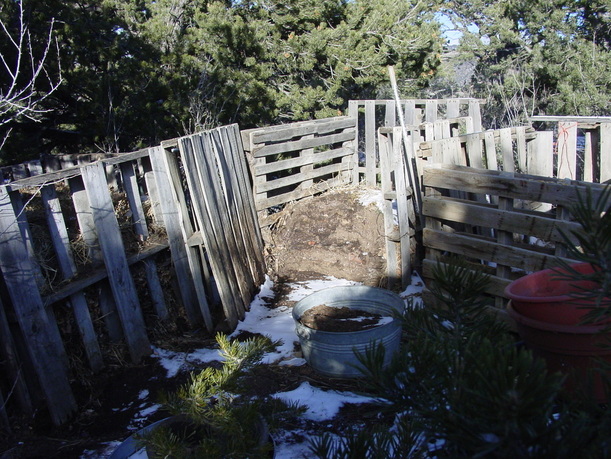
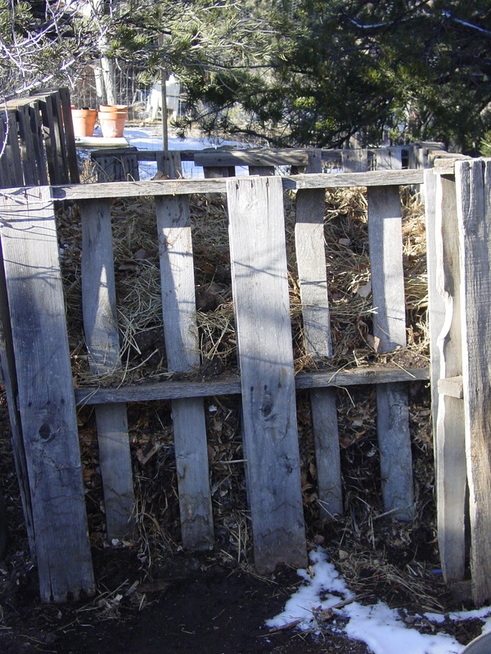
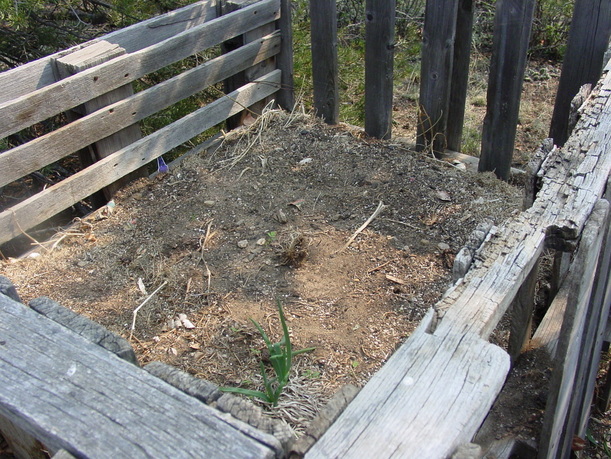
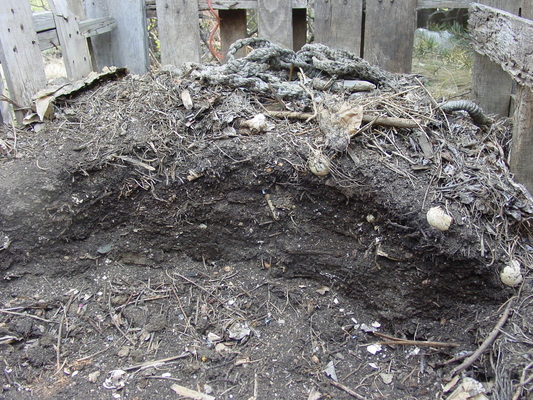
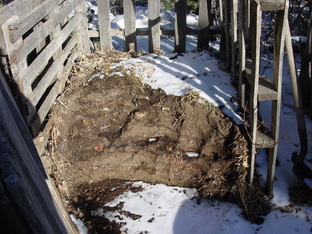
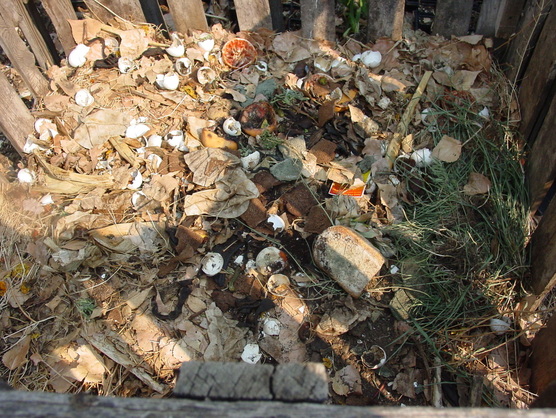
 RSS Feed
RSS Feed